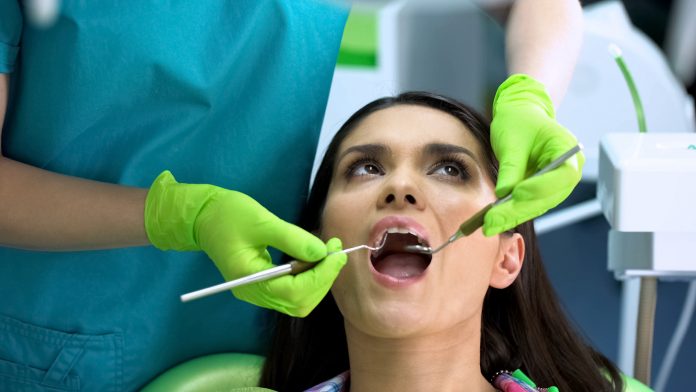Here, Megan Warrender looks into the strides being made by the NIDCR to support dental research and innovation, and, in particular, how current initiatives feed into long term plans for dental, oral and craniofacial health and disease in the U.S.
The National Institute of Dental and Craniofacial Research (NIDCR) is the federal government’s lead agency for scientific research on dental, oral, and craniofacial health and disease. As part of the National Institutes of Health (NIH), the NIDCR is working hard to support dental research within the wider sphere of U.S. health.
In order to keep advancing dental, oral, and craniofacial research, in March 2017 the agency launched NIDCR 2030, which is a strategic visioning initiative designed to track and advance these areas over the next 15 years. Through this strategy, the Institute continues to seek input from researchers, faculty, students, healthcare providers, professional and non-profit organisations, industry representatives, government officials, patients, and other community members. The initiative has outlined five goal areas for 2030 with each goal including relevant proposed research initiatives which are posted for comment, along with announcements of upcoming symposia and workshops. These five goal areas are outlined below:
Oral Health + Overall Health
There are undeniable connections between oral health and overall health and numerous benefits to integrating the two. Oral health will be fully integrated into the study of overall health through a deeper and more complex understanding of the underlying biological, behavioural, and social factors that cause disease or support health in the dental, oral, and craniofacial region and throughout the body. An example of a research initiative under this heading is “Inflammation: Causative link between oral and systemic disease.” Currently in the workshop stage, this initiative was submitted by Michael C. Alfano, who stated that “it’s time to stop referring to the ‘interesting associations’ between oral health and general health and state outright that oral inflammation is a contributing cause of diseases like heart disease and diabetes. Reducing inflammation substantially reduces health costs by reducing hospitalizations.” (1)
Precision Health
Precision prevention, treatment, and public health interventions will be available to all people based on their unique variations in genetic, biological, behavioural, and social determinants of health. Individual and population-based dental, oral, and craniofacial prevention and treatment strategies will be scientifically based and validated.
Autotherapies
Prevention and treatment tactics aimed at these regions will take advantage of the body’s innate ability to repair and regenerate damaged or diseased tissues. In addition, these autotherapies will be used to restore the biological balance of body systems and maintain health. One example of this would be the work being done on Regenerative Endodontics. More than 15 million root canals are performed yearly by disinfection and placement of a root filling. Working with an alternative approach to regenerate the pulp-dentin complex using autologous post-natal mesenchymal stem cells (MSCs) with a resorbable scaffold would advance oral surgery.
Oral Biodevices
The mouth will be used as a portal for real-time monitoring and assessment of oral health and overall health. Devices located in the dental, oral, and craniofacial region will also be able to diagnose disease and deliver local and systemic treatments.
Workforce Diversity
The dental, oral, and craniofacial research workforce will cross disciplines, draw from multiple professions, and reflect the diversity of the nation with regard to race, gender, ethnicity, disability, and socioeconomic status. Their commitment to diversity and an inclusive research community is mutually beneficial, with research showing that teams with members from diverse backgrounds are more likely to generate innovative ideas than teams made up of members from similar backgrounds. On their website, the NIDCR state: “To succeed in its mission to improve dental, oral, and craniofacial health, NIDCR is committed to recruiting scientists who have different backgrounds and life experiences. Their participation is vital to the realization of NIDCR’s Strategic Plan.” (2)
More recently, however, new research initiatives are being carried out and worked on which also to feed into the long-term plans of NIDCR-2030. Currently developing more durable dental materials, with support from NIDCR, researchers are looking to create longer-lasting fillings, and have already developed a filling that is twice as strong than those currently used in dental clinics. Furthermore, researchers are looking to find resistant materials to cavity-causing bacteria to use to create the fillings. This is a creative and challenging initiative, as the chemistry of one’s mouth is ever-changing, with billions of resistant (and often cavity-causing) bacteria. Such creativity is supported by NIDCR, which has called for researchers to develop fillings that are better suited for the rigours of the oral cavity. Carmem Pfeifer, DDS, PhD, an Associate Professor of Biomaterials and Biomechanics in the Oregon Health & Science University (OHSU) School of Dentistry, has risen to that challenge. She has stated, “We did not want to make something so different that no dentist could use it. For this to be any benefit to the patient, the dentist must be able to use it in a reliable way.” (3) It is clear to see how this echoes the goals of NIDCR 2030, which are to transform how they promote health, treat disease, and overcome health disparities, so all people have the opportunity to lead healthy lives.
Furthermore, NIDCR scientists have recently uncovered a new type of cellular machinery that deposits a sticky substance called fibronectin along the protective barriers that enclose organs. It is hoped that this discovery may shed light on how organs such as salivary glands form during development and how they are sometimes breached by cancer in adulthood. Hoping these machines will pave the way to solving a molecular mystery, this is just one example of how dental research and innovation is being advanced and supported in order to articulate the NIDCR’s vision for the future of U.S. oral health.
References











